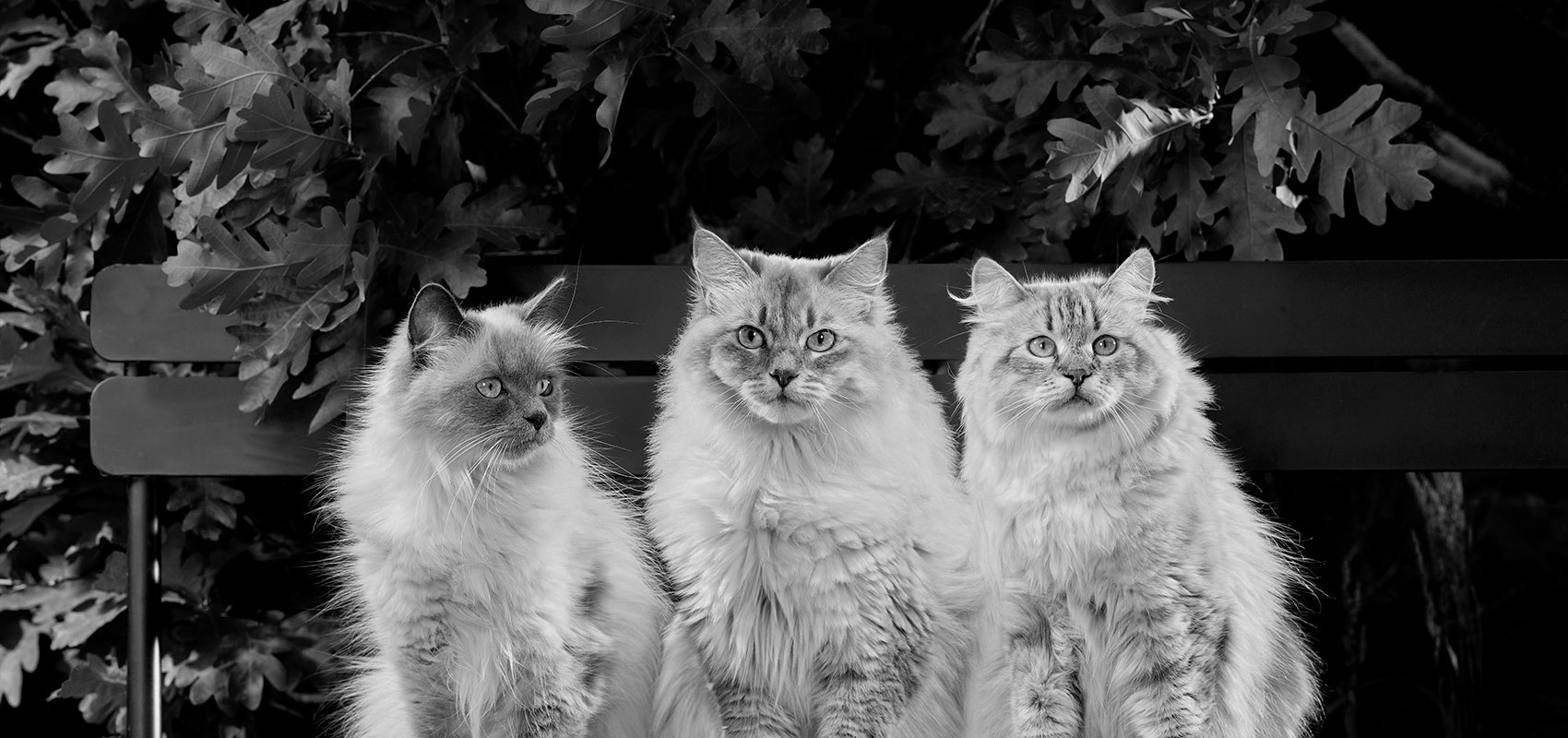
Optimal fiber level
What is a hairball?
A hairball is a small collection of hair or fur formed in the stomach of animals that is occasionally vomited up when it becomes too big. Hairballs are primarily a tight elongated cylinder of packed fur and may also include bits of other elements such as swallowed food.
How is it formed?
Intensive grooming in cats promotes the ingestion of important quantities of hair, which can accumulate in the stomach and intestines. Contrarily to dogs, the cat’s stomach lacks waves of muscular contractions sweeping the contents into the small intestine. Moreover, in the small intestine, there is no Migrating Myoelectric Complex (MMC), but rather irregular bursts of contractile activity. Consequently, the whole gut transit time is quite slow, lasting about 48 hours, whereas in dogs it is around 24 hours. This results in the formation of gastric or intestinal hairballs. Hairball formation is especially common in longhair breeds (Persian, Angora…).
How do I know if my cat has a hairball blockage?
Blockage of the intestines by a hairball may have the following symptoms:
- Repeated vomiting.
- Ongoing retching, gagging or hacking without producing a hairball.
- Abdominal pain and digestive discomfort.
- Lethargy/anorexia.
- Constipation/obstruction.
- Diarrhea.
How can I help my cat pass a hairball?
- Brush your cat on a regular basis with the proper brush. Ask your pet store specialist for the best tools available.
- Serve a high-quality hairball control formula with a minimum of 6% fiber.
High levels of natural insoluble fiber like miscanthus grass, pea fiber and alfalfa will increase intestinal motility by mechanical stimulation of the submucosal muscular layer and promote intestinal transit. This helps hair gently and efficiently pass through the digestive tract, and limits hair aggregation and hairball formation. - The hairball control cat formula should also contain nutrients that will improve the skin and coat condition, helping to prevent extra shedding of hair.
- Serve special hairball control cat treats recommended by your pet store.
- Make water intake a priority. Always have fresh water available. Most cats prefer to drink moving, running water. Special water fountain equipment is available in pet stores and favorizes a better water intake and is strongly suggested.
Does wet cat food help with hairballs?
With a proper premium hairball control dry cat formula, your cat’s digestive system should be able to pass the amount of hair they swallow without trouble. However, some indoor cats can get into hairier situations if they don’t have enough moisture in their diet and/or do not drink a lot. In order to make sure the cat gets enough water, you can get a mix of high-quality wet food with their premium hairball control dry cat formula, and still offer plenty of fresh water to stimulate water intake.
Other than the hairball control feature, should I pick a food that will also help improve the skin & coat condition?
Aiming for a healthier, shiny coat for your cat will definitely help prevent the formation of hairballs.
Less shedding = less hairball formation!
Adding quality sources of fat providing the essential fatty acids like omega-3 and omega-6 will be of first importance.
Omega-6 fatty acids are essential for maintenance of skin and coat condition, normal growth, proper membrane structure, and absorption of fat-soluble vitamins. Linoleic acid is the most important omega-6 fatty acid because it cannot be synthesized by cats, and it is used to make other omega-6 fatty acids. Chicken fat is an excellent source!
Omega-3 fatty acids have anti-inflammatory properties, making them a great choice for cats who have allergies or suffer from dry skin or hotspots. Natural sources like flaxseed and fish oil are premium sources and help support a shiny coat and less shedding.
Targeting a ratio of omega-3 and omega-6 between 1:3 to 1:5 is recommended and will help give your cat a fuller, shinier coat and lower shedding.
Will the extra fiber content in the hairball formula help improve stool formation?
Stool volume and stool consistence are the major criteria in appreciation of pet food quality. Insoluble fiber acts as bulk, stimulating the propulsion of faeces. Considered as nutritionally inert material, the level of insoluble dietary fiber and stool volume are strongly correlated. Faeces consistence is largely influenced by the water-binding capacity of insoluble dietary fibers, which acts like sponge and ensure the formation of well-formed stools, making it easier to clean your cat pan.
Can the high fiber level in a hairball control formula help clean teeth?
High levels of insoluble fiber in a hairball formula can impact kibble structure, texture, cooking temperature and kibble hardness. As kibble hardness determines biting and friction forces during crunching, the increased kibble hardness provokes a stronger crunching and improved friction, strengthening dental mucosa and countering dental plaque adhesion.
So yes, a cat hairball formula may have an oral care effect!